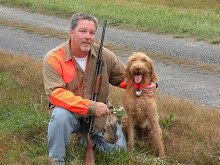 The first trout I ever caught, shown here alongside his home water, was caught despite the fact that my rod was too heavy, my flybox was too light and I had almost no idea what I was doing. Tangle, snag, tangle. Knot, tangle, snag. I just could not, with the foliage around me, get my fly even half way out into this very small creek. Leaning against the angled tree you see here, frustrated, I dropped an ant straight down at the roots and fed some slack out. The fly drifted downstream, less than a foot from the bank. I held the rod parallel with the tree on the right side and peaked around the left side just in time to see the strike.
The first trout I ever caught, shown here alongside his home water, was caught despite the fact that my rod was too heavy, my flybox was too light and I had almost no idea what I was doing. Tangle, snag, tangle. Knot, tangle, snag. I just could not, with the foliage around me, get my fly even half way out into this very small creek. Leaning against the angled tree you see here, frustrated, I dropped an ant straight down at the roots and fed some slack out. The fly drifted downstream, less than a foot from the bank. I held the rod parallel with the tree on the right side and peaked around the left side just in time to see the strike.At the time, I almost felt like it was cheating. I mean, I hadn't even casted! I could barely even SEE where the fly was! And it worked immediately. Gee. Hide behind a tree, hide your rod behind a tree, drift a fly along the bank -- once, and catch your first trout. Uh, you'd think I tried that technique several hundred times again since then, right? Wrong. I stand in the water and watch the pretty casts, I wade clumsily and then crouch down the slightest bit as if that equates to being sneaky. I make all kinds of mistakes, I sometimes get it right and have success. But sometimes, even often, I forget to take the time to examine what about that last scenario helped me catch that fish, and apply it in the future.
When I read Tom Chandler from Trout Underground's really great article, The Stealth Fly Fisher: Catching Fish Through Deceit & Trickery, I realized how little attention I have paid to this major part of fly fishing. This weekend I am going to try to remember a few of these lessons and try to be a sneakier, better angler. Thanks Tom.



No comments:
Post a Comment